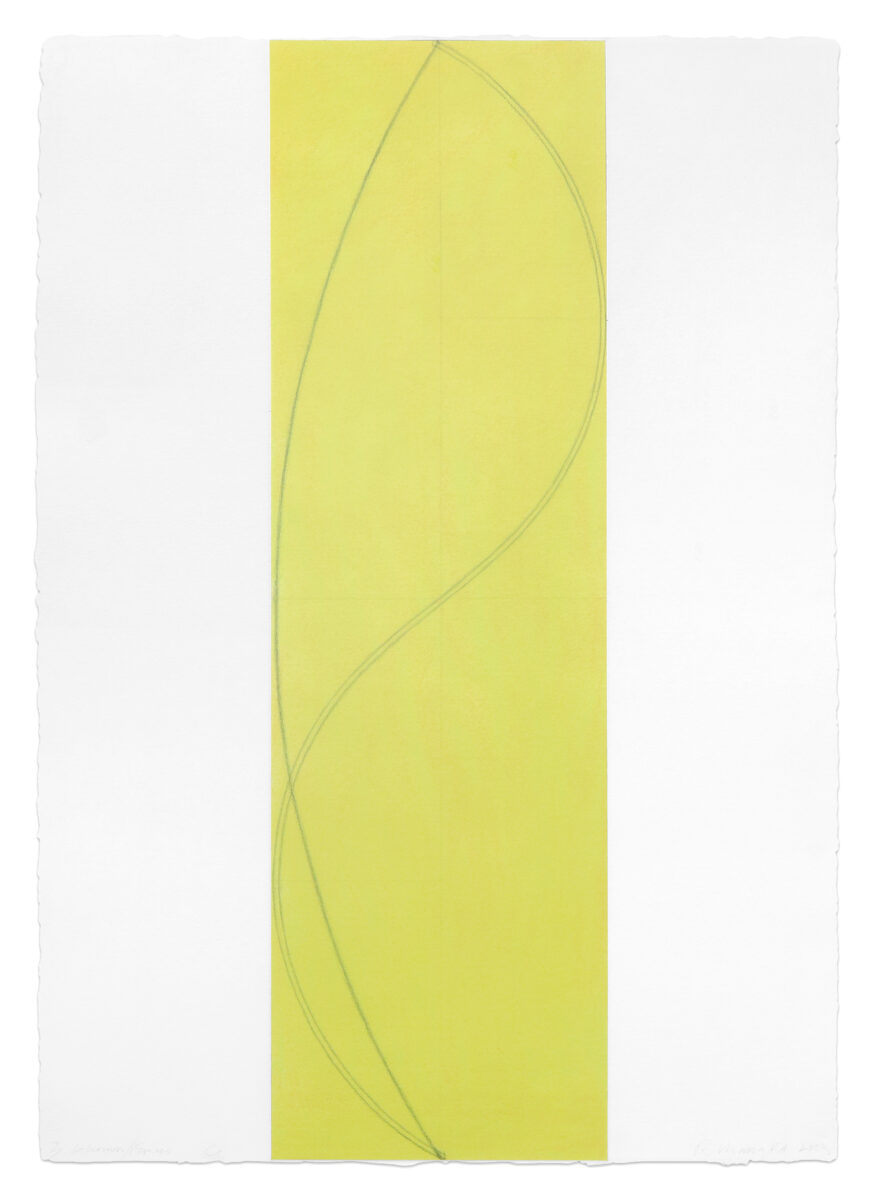






Paper size: 41 1/2 x 29 1/2 inches each (105.4 x 74.9 cm each)
Frame size: 45 x 33 inches each (114.3 x 83.8 cm each)
Signed and dated lower right, titled lower left on each sheet
(Inventory #35394)
Paper size: 41 1/2 x 29 1/2 inches each (105.4 x 74.9 cm each)
Frame size: 45 x 33 inches each (114.3 x 83.8 cm each)
Signed and dated lower right, titled lower left on each sheet
(Inventory #35394)

“The kind of experience I described with a particular Rothko or Newman, or for that matter with a particular Piero della Francesca or mosaic, seems to take things to a higher level. I’m not sure “spiritual” is such a good word because of its associations with religious experience. I am referring instead to the very personal, intense relationship you can have with a work. I am not sure I want the work to provide a contemplative mood either; rather I want the work to cause me to drop everything and then slowly pick up the pieces and enter into a dialogue with it.”
Robert Mangold, as told to Sylvia Plimack Mangold in an unpublished interview
Born in North Tonawanda, New York in 1937, Robert Mangold studied at the Cleveland Art Institute from 1956 to 1959. After receiving a fellowship to study at the Yale Summer School of Music and Art in Norfolk, Connecticut, he transferred to Yale University, where he received his B.F.A. in 1961 and M.F.A. in 1963. There, he experimented with a variety of stylistic idioms. His classmates included Nancy Graves, Brice Marden, and Richard Serra. He married fellow art student Sylvia Plimack in 1961, and they moved to New York upon the completion of his MFA in 1962. In New York during the early sixties, Mangold worked as a guard at the Museum of Modern Art with colleagues Sol LeWitt, Robert Ryman, Dan Flavin, and Lucy Lippard. Together these artists shared ideas that developed into minimalist theories.
By 1964, Mangold had moved into his signature Minimalist painting style and had his first solo exhibition, Walls and Areas, at Fischbach Gallery in New York City. He subsequently participated in several seminal group exhibitions, including Systematic Painting held at the Solomon R. Guggenheim Museum in 1966, and Primary Structures, at the Jewish Museum in 1967. Mangold held various teaching positions, among them the School of Visual Arts in New York, Hunter College, Skowhegan School of Painting and Sculpture, Yale Summer School of Music and Art, and Cornell University Summer Art School. After receiving a Guggenheim Memorial Fellowship in 1969, Mangold and his wife, Sylvia Plimack Mangold, moved to upstate New York where they still live and work.
Major museum exhibitions of his work have been held at the Solomon R. Guggenheim Museum in New York (1971); the Museum of Contemporary Art in San Diego (1974); the Stedelijk Museum in Amsterdam (1982); Hallen für Neue Kunst in Schaffhausen (1993); the Musée D’Orsay in Paris (2006); the Albright Knox Art Gallery (2009), Buffalo, New York; Parasol Unit (2009), London; and the Kemper Museum of Art (2016-17), Kansas City, Missouri. His work has been featured in the Whitney Biennial four times in 1979, 1983, 1985, and 2004 and is included in approximately 100 international public collections.
10 Newbury Street, Boston, Massachusetts 02116
617-262-4490 | info@krakowwitkingallery.com
The gallery is free and open to the public Tuesday – Saturday, 10am – 5:30pm